In today’s world, organisations face an increasing range of security threats—from opportunistic crime and workplace violence to terrorism and complex insider risks. Yet many businesses operate without a clear understanding of their vulnerabilities, leaving critical people, assets, and operations exposed. A Security Threat Vulnerability Assessment (STVA) provides the structured approach needed to identify these weaknesses, assess potential threats, and develop proportionate measures to reduce risks effectively.
Smartsec Security Solutions specialises in independent security consulting, helping businesses, government agencies, and facility managers across Australia understand their true risk exposure and strengthen their protective measures. This article explains what an STVA involves, why it’s essential, and how our expertise can help you build a safer, more resilient organisation.
What Is a Security Threat Vulnerability Assessment?
A Security Threat Vulnerability Assessment is a comprehensive evaluation of an organisation’s exposure to security threats. It considers the likelihood of intentional or unintentional acts that could cause harm and examines the vulnerabilities in your current security setup that could be exploited.
An STVA is not simply a security checklist—it is a structured risk-based process, often aligned with internationally recognised frameworks such as:
- ISO 31000:2018 – Risk management principles and guidelines
- AS/NZS 4421:2011 – Guard and patrol security services (for operational considerations)
- ISO 22343-1:2023 – Hostile Vehicle Mitigation where vehicle-based attacks are a concern
- AS 2201.2:2022 – Alarm monitoring centres (for control room resilience assessments)
The ultimate goal is to help decision-makers understand where they are most exposed and how to prioritise improvements to prevent or mitigate potential incidents.
The Key Components of an STVA
An effective STVA usually includes several steps to ensure a thorough understanding of your organisation’s security posture.
Threat Identification
We start by defining potential threats relevant to your organisation, considering:
- Opportunistic crime (theft, burglary, vandalism)
- Workplace violence and insider threats
- Terrorism or politically motivated acts
- Hostile vehicle attacks (ram raids or deliberate intrusions)
- Cyber-physical threats (attacks on integrated systems)
- Natural or environmental hazards impacting security operations
Threat identification often includes open-source intelligence gathering and analysis of local crime data, ensuring recommendations are based on current and credible information.
Vulnerability Assessment
Next, we examine physical, technical, and procedural vulnerabilities that could be exploited by those threats. This can include:
- Weak access control systems allowing unauthorised entry
- Poorly positioned or low-quality CCTV coverage
- Lack of perimeter protection or vehicle barriers
- Ineffective alarm systems or monitoring processes
- Limited staff training or unclear emergency procedures
- Design flaws that create concealment opportunities or escape routes
By systematically evaluating each vulnerability, we build a clear picture of your organisation’s weak points.
Impact and Likelihood Analysis
Threats and vulnerabilities are then assessed based on:
- Likelihood: How probable it is that a threat actor would attempt this attack or exploit a vulnerability.
- Consequence: The potential harm or disruption if the event occurred, considering financial, reputational, safety, and operational impacts.
We use a risk rating matrix, aligned with ISO 31000 principles, to prioritise the most significant risks that need immediate attention.
Recommendations and Risk Mitigation Measures
The outcome of an STVA is a clear, actionable report outlining:
- Security design improvements (access control, lighting, CCTV upgrades)
- Hostile Vehicle Mitigation (bollards, barriers, traffic management)
- Procedural changes to reduce insider or unauthorised access risks
- Staff awareness and emergency response training
- Long-term resilience planning and periodic re-assessments
Our recommendations are independent and unbiased. We don’t sell or install security equipment, ensuring that our advice is based solely on what’s right for your site and risk profile.
Benefits of Conducting a Security Threat Vulnerability Assessment
Investing in an STVA provides several tangible benefits:
- Proactive Risk Management: Identify weaknesses before they are exploited, avoiding costly incidents.
- Regulatory and Insurance Compliance: Many government or high-risk facilities are required to demonstrate security risk assessments are in place.
- Improved Safety and Confidence: Staff, visitors, and stakeholders feel safer knowing risks are actively managed.
- Cost-Efficiency: Avoid unnecessary spending on inappropriate technology or ineffective measures by focusing investment on high-priority risks.
- Reputation Protection: Prevent disruptions that can damage public trust or long-term business viability.
Who Needs an STVA?
An STVA is particularly valuable for:
- Government and Council Facilities: Protecting public buildings, community assets, and public gatherings.
- Transport Hubs and Aviation: Managing complex threat environments and compliance requirements.
- Retail and Shopping Centres: Preventing crimes such as ram raids or organised theft.
- Critical Infrastructure: Power, water, and communication assets with potential high-impact threats.
- Strata and Commercial Buildings: Ensuring common areas and access points are secure for all occupants.
- Event Venues and Public Spaces: Balancing accessibility with protective security needs.
How Smartsec Security Solutions Can Help
At Smartsec Security Solutions, we bring over 17 years of specialised experience in physical security and risk management. Our independent approach means you receive advice that is practical, tailored, and free from vendor bias.
Our process includes:
- Stakeholder interviews to understand operational requirements
- Site visits during daytime and after-hours conditions
- Crime and incident data analysis specific to your location
- Evaluation of current security measures and infrastructure
- Detailed reporting with a prioritised risk register and actionable recommendations
- Optional workshops with management teams to plan implementation stages
We work closely with architects, facility managers, and security teams to ensure recommendations can be realistically delivered within your operational and budgetary constraints.
Conclusion
A Security Threat Vulnerability Assessment is an essential tool for any organisation looking to safeguard its people, assets, and reputation against today’s complex security challenges. By understanding the threats you face, identifying vulnerabilities, and applying best-practice mitigation strategies, you can significantly reduce your exposure to harm.
Smartsec Security Solutions is trusted by organisations across Perth and beyond to deliver thorough, independent, and actionable STVAs. If you want expert insight into your true risk landscape—and a clear roadmap to stronger security—our team can help.



